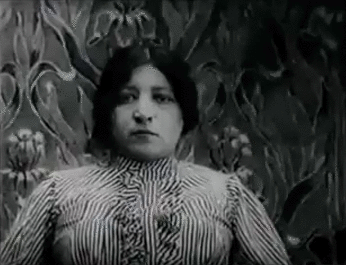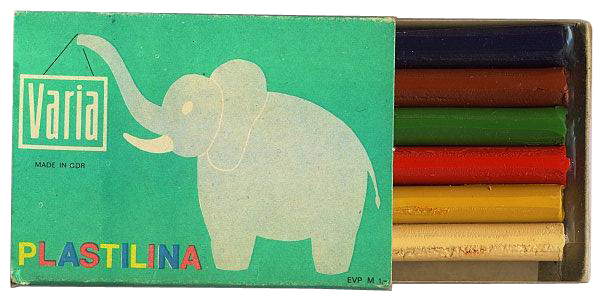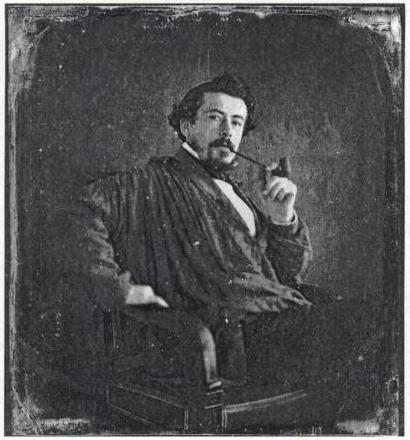|
Stop-motion
Stop motion is an animated filmmaking technique in which objects are physically manipulated in small increments between individually photographed frames so that they will appear to exhibit independent motion or change when the series of frames is played back. Any kind of object can thus be animated, but puppets with movable joints (puppet animation) or plasticine figures (''clay animation'' or claymation) are most commonly used. Puppets, models or clay figures built around an armature are used in model animation. Stop motion with live actors is often referred to as pixilation. Stop motion of flat materials such as paper, fabrics or photographs is usually called cutout animation. Terminology The term "stop motion", relating to the animation technique, is often spelled with a hyphen as "stop-motion". Both orthographical variants, with and without the hyphen, are correct, but the hyphenated one has a second meaning that is unrelated to animation or cinema: "a device for automatical ... [...More Info...] [...Related Items...] OR: [Wikipedia] [Google] [Baidu] |
Clay Animation
Clay animation or claymation, sometimes plasticine animation, is one of many forms of stop-motion animation. Each animated piece, either character or background, is "deformable"—made of a malleable substance, usually plasticine clay. Traditional animation, from cel animation to stop motion, is produced by recording each frame, or still picture, on film or digital media and then playing the recorded frames back in rapid succession before the viewer. These and other moving images, from zoetrope to films and video games, create the illusion of motion by playing back at over ten to twelve frames per second. Technique Each object or character is sculpted from clay or other such similarly pliable material as plasticine, usually around a wire skeleton, called an armature, and then arranged on the set, where it is photographed once before being slightly moved by hand to prepare it for the next shot, and so on until the animator has achieved the desired amount of film. Upon playb ... [...More Info...] [...Related Items...] OR: [Wikipedia] [Google] [Baidu] |
Animation
Animation is a method by which image, still figures are manipulated to appear as Motion picture, moving images. In traditional animation, images are drawn or painted by hand on transparent cel, celluloid sheets to be photographed and exhibited on film. Today, most animations are made with computer-generated imagery (CGI). Computer animation can be very detailed Computer animation#Animation methods, 3D animation, while Traditional animation#Computers and traditional animation, 2D computer animation (which may have the look of traditional animation) can be used for stylistic reasons, low bandwidth, or faster real-time renderings. Other common animation methods apply a stop motion technique to two- and three-dimensional objects like cutout animation, paper cutouts, puppets, or Clay animation, clay figures. A cartoon is an animated film, usually a short film, featuring an cartoon, exaggerated visual style. The style takes inspiration from comic strips, often featuring anthropomorphi ... [...More Info...] [...Related Items...] OR: [Wikipedia] [Google] [Baidu] |
Cutout Animation
Cutout animation is a form of stop-motion animation using flat characters, props and backgrounds cut from materials such as paper, card, stiff fabric or photographs. The props would be cut out and used as puppets for stop motion. The world's earliest known animated feature films were cutout animations (made in Argentina by Quirino Cristiani), as is the world's earliest surviving animated feature '' Die Abenteuer des Prinzen Achmed'' (1926) by Lotte Reiniger. The technique of most cutout animation is comparable to that of shadow play, but with stop motion replacing the manual or mechanical manipulation of flat puppets. Some films, including ''Die Abenteuer des Prinzen Achmed'', also have much of their silhouette style in common with shadow plays. Cutout animation pioneer Lotte Reiniger studied the traditions of shadow play and created several shadow play film sequences, including a tribute to François Dominique Séraphin in Jean Renoir's film ''La Marseillaise'' (1938). While s ... [...More Info...] [...Related Items...] OR: [Wikipedia] [Google] [Baidu] |
Pixilation
Pixilation is a stop motion technique in which live actors are used as a frame-by-frame subject in an animated film, by repeatedly posing while one or more frame is taken and changing pose slightly before the next frame or frames. The actor becomes a kind of living stop-motion puppet. This technique is often used as a way to blend live actors with animated ones in a movie, such as in '' The Secret Adventures of Tom Thumb'' by the Bolex Brothers. Early examples of this technique are '' Hôtel électrique'' from 1908 and Émile Cohl's 1911 movie ''Jobard ne peut pas voir les femmes travailler'' (''Jobard cannot see the women working''). The term is widely credited to Grant Munro (although some say it was Norman McLaren) and he made an experimental movie named "Pixillation", available in his DVD collection "Cut Up – The Films of Grant Munro." Films * Norman McLaren's Oscar-winner ''Neighbours'', '' A Chairy Tale'' (1957) and ''Two Bagatelles'' * Chuck Menville and Len Janson' ... [...More Info...] [...Related Items...] OR: [Wikipedia] [Google] [Baidu] |
Plasticine
Plasticine is a putty-like modelling material made from calcium salts, petroleum jelly and aliphatic acids. Though originally a brand name for the British version of the product, it is now applied generically in English as a product category to other formulations. Plasticine is used for children's play and as a modelling medium for more formal or permanent structures. Because of its non-drying property, it is a material commonly chosen for stop-motion animation, including several Oscar-winning films by Nick Park. History Franz Kolb, owner of a pharmacy in Munich, Germany, invented an oil-based modelling clay in 1880. At the time, the city was a centre for the arts, and among Kolb's circle of friends were sculptors. They complained about how with the clay they were using for modelling, their sculptures would dry too fast and that — particularly in winter —, it was too difficult to work with. In order to commercialize his invention, he presented it to the Faber-Castel ... [...More Info...] [...Related Items...] OR: [Wikipedia] [Google] [Baidu] |
Model Animation
Model animation is a form of stop motion animation designed to merge with live-action footage to create the illusion of a real-world fantasy sequence. Techniques Many types of models have been created and developed, and the choice mainly depends on the budget of the film: Clay Models: Unlike most clay figures used for animation, clay models have an inner metal skeleton designed to allow them realistic movements and expressions. Built-Up Models: These types of models are more expensive and detailed than clay models. They are made by building up pieces of foam on a metal skeleton to create a body, and then either brushing on several layers of liquid latex or casting soft rubbery skins and attaching then to the padded armature. "Cast" Models: These types of models are the most expensive used in the industry and are longer-lasting than the other types. They start as clay sculptures onto which two- (or more) part molds are made in order to reproduce all the details. Then the mold p ... [...More Info...] [...Related Items...] OR: [Wikipedia] [Google] [Baidu] |
Silent Film
A silent film is a film with no synchronized recorded sound (or more generally, no audible dialogue). Though silent films convey narrative and emotion visually, various plot elements (such as a setting or era) or key lines of dialogue may, when necessary, be conveyed by the use of title cards. The term "silent film" is something of a misnomer, as these films were almost always accompanied by live sounds. During the silent era that existed from the mid-1890s to the late 1920s, a pianist, theater organist—or even, in large cities, a small orchestra—would often play music to accompany the films. Pianists and organists would play either from sheet music, or improvisation. Sometimes a person would even narrate the inter-title cards for the audience. Though at the time the technology to synchronize sound with the film did not exist, music was seen as an essential part of the viewing experience. "Silent film" is typically used as a historical term to describe an era of cinema pri ... [...More Info...] [...Related Items...] OR: [Wikipedia] [Google] [Baidu] |
Time Lapse
Time-lapse photography is a technique in which the frequency at which film frames are captured (the frame rate) is much lower than the frequency used to view the sequence. When played at normal speed, time appears to be moving faster and thus ''lapsing''. For example, an image of a scene may be captured at 1 frame per second but then played back at 30 frames per second; the result is an apparent ''30 times'' speed increase. Similarly, film can also be played at a much lower rate than at which it was captured, which slows down an otherwise fast action, as in slow motion or high-speed photography. Processes that would normally appear subtle and slow to the human eye, such as the motion of the sun and stars in the sky or the growth of a plant, become very pronounced. Time-lapse is the extreme version of the cinematography technique of ''undercranking''. Stop motion animation is a comparable technique; a subject that does not actually move, such as a puppet, can repeatedly be move ... [...More Info...] [...Related Items...] OR: [Wikipedia] [Google] [Baidu] |
Armature (sculpture)
In sculpture, an armature is a framework around which the sculpture is built, when the sculpture could not stand on its own. This framework provides structure and stability, especially when a plastic material such as wax, newspaper or clay is being used as the medium. When sculpting the human figure, the armature is analogous to the major skeleton and has essentially the same purpose: to hold the body erect. An armature is often made of heavy, dark aluminium wire which is stiff, but can be bent and twisted into shape without much difficulty. The wire is affixed to a base which is usually made of wood. The artist then begins fleshing out the sculpture by adding wax or clay over the wire. Depending on the material and technique, the armature may be left buried within the sculpture but, if the sculpture is to be hollowed out for firing, it must be removed. Large representational sculptures meant for outdoor display are typically fashioned of bronze or other types of sheet metal, ... [...More Info...] [...Related Items...] OR: [Wikipedia] [Google] [Baidu] |
Jules Duboscq
Louis Jules Duboscq (March 5, 1817 – September 24, 1886) was a French instrument maker, inventor, and pioneering photographer. He was known in his time, and is remembered today, for the high quality of his optical instruments. Life and work Duboscq was born at Seine-et-Oise in 1817. He was apprenticed in 1834 to Jean-Baptiste-François Soleil (1798–1878), a prominent instrument maker, and he married one of Soleil's daughters, Rosalie Jeanne Josephine, in 1839. Among the instruments Duboscq built were a stereoscope (marketing David Brewster's lenticular stereoscope), a colorimeter, a polarimeter, a heliostat and a saccharimeter. See also * Colorimetry (chemical method) In physical and analytical chemistry, colorimetry or colourimetry is a technique used to determine the concentration of colored compounds in solution. A colorimeter is a device used to test the concentration of a solution by measuring its ... References Further reading * * Ext ... [...More Info...] [...Related Items...] OR: [Wikipedia] [Google] [Baidu] |
Stop Trick
The substitution splice or stop trick is a cinematic special effect in which filmmakers achieve an appearance, disappearance, or transformation by altering one or more selected aspects of the mise-en-scène between two shots while maintaining the same framing and other aspects of the scene in both shots. The effect is usually polished by careful editing to establish a seamless cut and optimal moment of change. It has also been referred to as stop motion substitution or stop-action. The pioneering French filmmaker Georges Méliès claimed to have accidentally developed the stop trick, as he wrote in ''Les Vues Cinématographiques'' in 1907 (translated from French): According to the film scholar Jacques Deslandes, it is more likely that Méliès discovered the trick by carefully examining a print of the Edison Manufacturing Company's 1895 film ''The Execution of Mary Stuart'', in which a primitive version of the trick appears. In any case, the substitution splice was both the fir ... [...More Info...] [...Related Items...] OR: [Wikipedia] [Google] [Baidu] |
Edison Manufacturing Company
The Edison Manufacturing Company, originally registered as the United Edison Manufacturing Company and often known as simply the Edison Company, was organized by inventor and entrepreneur Thomas Edison and incorporated in New York City in May 1889. It succeeded the Edison United Manufacturing Company, founded in 1886 as a sales agency for the Edison Lamp Company, Edison Machine Works, and Bergmann & Company, which made electric lighting fixtures, sockets, and other accessories. In April 1894, the Edison laboratory's Kinetoscope operation, which was about to be commercialized, was brought under the Edison Company umbrella. In 1900, the United Edison Manufacturing Company was evidently succeeded by the New Jersey–incorporated Edison Manufacturing Company. The company's assets and operations were transferred to Thomas A. Edison, Inc. in 1911. History The Edison United Manufacturing Company was incorporated in July 1886 to consolidate the sales operations of the various Edison manuf ... [...More Info...] [...Related Items...] OR: [Wikipedia] [Google] [Baidu] |






